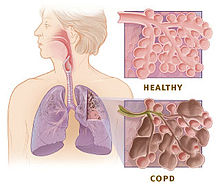[su_divider top=”no” style=”double” divider_color=”#952524″ link_color=”#952524″ size=”2″ margin=”10″]
What is Cryoglobulinemia? How to manage it? What are the precautions to be taken? What are the signs and symptoms? What is the cause of this disease? How to treat it? How can homeopathy help you? All of this answered, in this post and of course our doctors always there to help you. Just fill in your details in the form down below and we will answer all your questions for FREE!
[su_divider top=”no” style=”double” divider_color=”#952524″ link_color=”#952524″ size=”2″ margin=”10″]
[sc name=”query”]

What is cryoglobulinemia?
Cryoglobulinemia is a medical condition in which blood contains large amounts of cryoglobulins-proteins that become insoluble at reduced temperatures.
What are the risk factors of Cryoglobulinemia?
• Blindness
• Stroke, seizure or coma
• Pericarditis
• Congestive heart failure
• Respiratory distress
• Gastrointestinal hemorrhage
• Acute renal failure
• Severe cutaneous necrosis or gangrene
Is Cryoglobulinemia a cancer?
Cryoglobulinemia is generally broken down in three subtypes. Type I cryoglobulinemia is usually associated with an underlying disorder, specifically certain types of cancer. Type II and type III cryoglobulinemia also called as mixed cryoglobulinemia.
What is the Classification of Cryoglobulinemia?
Cryoglobulinemia is classifiably grouped into three types according to brouet classification and the three types are as follows:-
• Type І cryoglobulinemia is most commonly encountered in patients with a plasma cell dyscrasia such as
-Multiple myelomas
-Waldenstrom macroglobulinemia
• Type ΙΙ and type ІΙІ of cryoglobulinemia are strongly associated with infection by the hepatitis C virus.
• Type ΙІΙ of cryoglobulinemia is associated with autoimmune diseases such as given below
-Systemic lupus erythematosus
-Rheumatoid arthritis
-Disease associations’ variable based on type of cryoglobulinemia are given as under
• Type І cryoglobulinemia is seen in lymphoproliferative disorders example multiple myeloma, Waldenstrom macroglobulinemia.
• Type ΙІ and ΙІΙ are observed in chronic inflammatory diseases such as
-chronic liver
-Disease Infections
-Coexistent connective- tissue diseases
-Mixed cryoglobulinemia is rarely associated with
-lymphoproliferative disorders.
Infections in which cryoglobulinemia is seen
• Viral infections are as follows
-Hepatitis A, B, C
-HIV
-Cytomegalovirus
-Adenovirus
• Bacterial infections
-Syphilis
-Lyme disease
-Leprosy
-Q-fever
-Brucellosis
-Endocarditis
-Streptococcal infections
• Fungal
-Coccidioidomycosis
• Parasitic
-Malaria
-Toxoplasmosis
-Autoimmune diseases
•SLE, rheumatoid arthritis, Sjogren’s syndrome
• Vasculitis- polyarteritis nodosa, Henoch-schonlein purpura
What are the signs and symptoms of cryoglobulinemia
Skin manifestation
• Livedoid vasculitis
• Cold-induced urticaria
• Hyperkeratotic spicules in areas exposed to cold
• Scarring of nose tip, pinnae, fingertips, and toes
• Acrocyanosis
• Nailfold capillary abnormalities
• Palpable purpura
• Ischemic necrosis
Pulmonary manifestation
• Dyspnea
• A cough
• Pleurisy
• Pleural effusion
• Bronchiectasis
Gastrointestinal manifestations
• Abdominal pain
• Hemorrhage
• Hepatomegaly or signs of cirrhosis’
• Splenomegaly
Renal manifestations
• Membranoproliferative glomerulonephritis
• Intraluminal cryoglobulin deposition
• Hypertension
• Nephrotic-range proteinuria with resultant edema
Joint manifestation
• Arthralgias
• Frank arthritis and progressive joint deformity
Nervous system manifestations
• Sensorimotor neuropathy
• Visual disturbances
• CNS involvement
Can cryoglobulinemia be treated?
In severe cases, treatment can help keep flares to a minimum and reduce the overall severity of the symptoms. Hepatitis C, blood cancers, and underlying causes of cryoglobulinemia will require treatment and prognosis will depends upon the person immunity.
Cryoglobulinemia is treated with plasmapheresis.
Severe cryoglobulinemia which involves vital organs or large areas of skin is treated with corticosteroids and other medicines that calm the immune system.
What are the investigations for cryoglobulinemia?
• Evaluation of serum cryoglobulins
• Urinanalysis
• Complete blood cell count
• Serum chemistry
• Liver function studies
• Rheumatoid factor
• Antinuclear antibody
• Erythrocyte sedimentation rate
• Complete evaluation
Other studies to be done are as follows
• Consider serum protein electrophoresis
• Urine protein electrophoresis
• Quantitative immunoglobulin
• Serum viscosity
Imaging studies to be done are as follows
• A chest radiograph
• CT imaging
• Transesophageal echocardiography
• Angiography
Tissue biopsy required for diagnosis when patients are evaluated with vasculitis.
Electromyography and nerve conduction studies are also done
Further diagnostic procedures to be done are as follows:
• Bone marrow biopsy
• Liver or kidney biopsy.
For more information, you can visit Wikipedia and eMedicine.
Cryoglobulinemia
[su_divider divider_color=”#952524″ link_color=”#952524″ size=”2″ margin=”10″]
[sc name=”know-your-doctor”]
[sc name=”more-links-diseases”]

